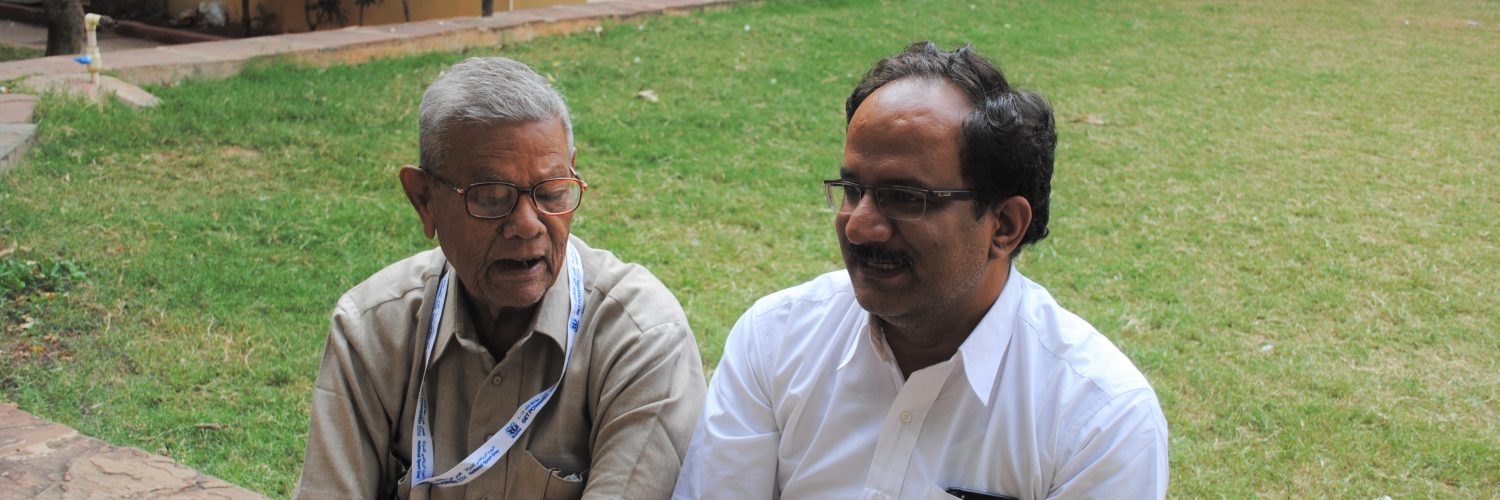Kalipatnam Ram Rao, who’s known as KaaRaa mastaru among Telugu literary lovers, was a man of a few words. He’d measure his words before he’d utter them. He always took conversations, be it with a young writer or an adult that he knew for decades, very seriously. Sometimes, he’d even pause for a minute or two before saying something.
For, he knew the words can make ever-lasting impressions and can make or unmake relationships.
This trait had reflected in his writings too. In a literary life of nearly 80 years, he wrote just under 30 stories.
Born on November 9, 1924 at Ponduru in Srikakulam district, KaaRaa had been a keen observer of people and their socio, economic and political backgrounds. He would quickly make acquaintance with people, even strangers, and strike a chord with them immediately.
This innate ability had helped him in capturing the true essence of the characters in his stories. His narrative skills drew parallels with Russian writers like Gorky and Alexandre Kuprin. He would explain why a certain character had to behave in a particular way.
With a simple narrative technique, he would make the reader feel part of the setting as the characters, in flesh and blood, began to converse. You’d feel someone or some people that you knew in real life are talking. He would don the role of an onlooker or that elderly person in the village, who narrated the story dispassionately.
For example, take the characters of Satteyya in the short story ‘Bhayam’ (Fear), Erremma and Pydaiah in ‘Aarthi’ or Sitaravudu in ‘Yagnam’.
You find them in flesh-and-blood in a real-life village setting. KaaRaa, who was a mathematics teacher by profession, meticulously captured their antics, behaviour and mannerisms.
While his contemporary stalwarts, Ravi Sastry and Kutumba Rao focussed on the lives of middle-class and lower-middle class people in towns and cities, KaaRaa chose to focus on life in villages where worked as a teacher.
A founding member of Revolutionary Writers’ Association (Viplava Rachiyatala Sangham), KaaRaa was a member of the association for five years. He was elected the Secretary of the association in 1975 before he quit it a year later.
He always argued that a short story should be located in a particular ‘time and place’. He practiced it religiously in his stories and would take time to relate the socio, economic and political background in detail.
Though he believed in writing stories in simple narrative, he appreciated new ways of storytelling such as magic realism.
But for ‘Yagnam’, all of his stories were told in a simple narrative form. Yagnam, written some 55 years ago, ended with a dramatic and gory ending, triggering a debate that continues to rage till date. The story was about acute indebtedness in agriculture, forcing farmers to carry a millstone their necks forever.
To settle it once for all, ‘Sitaravudu’, son of an indebted farmer, chopped off his young son’s head so that he needn’t bear the debt burden.
This ending had shocked and startled the Telugu society. It, in fact, portrayed the sad state of affairs in the agricultural sector and the inability of farmers to come out of the crisis in the post-Independent era.
Published in 1964, the story reflected the subjective conditions that paved the way for an armed struggle a few years later.
In 1972, he wrote the story ‘Kutra’ (Conspiracy), which lampooned the conspiracy theories floated by the State agencies. The story was about the Parvatipuram Conspiracy case that was woven around the Srikakulam armed struggle of the late 1960s.
“Those who betrayed the people by making false promises are the real conspirators not those who question them,” he pointed out in the story.
Fifty years on, conspiracy theories are still floating around in the country, with the State holding scores of people in captivity for years without any trial.
He didn’t belong to the ‘art-for-the-art-sake’ school. He believed that a work of art should serve a purpose. He expected the writers to have a world view in order to understand life and pick themes.
A stickler to truth, KaaRaa wanted the writers to be answerable to people and always stick to truth. “You should not modify the truth in order to make it fit into your scheme of things,” he contended.
Another key feature of his writings is that his stories tell a different story underneath the plain narrative.
Though he stopped writing about three decades ago, KaaRaa’s love for short stories continued to keep him busy. He had voluntarily taken up the responsibility of initiating young writers into the art of storytelling.
He wrote a series of articles on the craft and encouraged people to write stories.
A voracious reader of short stories, he had the habit of writing postcards to writers with his opinion on their stories.
He ran a column ‘Neti Katha’ in Andhra Bhoomi, where he had published short stories of new writers. He had helped them in identifying themes for their stories and in evolving a style of their own.
At the age of 72, an age when most people prefer to take rest or enjoy the evening of their life, he had started work on ‘Katha Nilayam’, a one-stop-shop for all Telugu short stories, in Srikakulam (Andhra Pradesh).
For next 25 years, till he breathed his last on June 4, 2021 in Srikakulam, Katha Nilyam was at the centre of his universe.
Building a team of volunteers and touring extensively in the undivided Andhra Pradesh, he had collected thousands of short stories and short story collections.
The library now has a collection of about 98,000 short stories penned by 16,741 writers. Of the 98,000 stories, about 43,000 stories are available on Kathanilyam’s website.
As he built the library, he attracted criticism for accepting contributions from some sources that he had once opposed as a member of Virasam.
In 1974, he refused to take an award from Andhra Pradesh Sahitya Akademi Award, saying he can’t accept an award from an institute funded by the Government that was responsible for killing scores of people.
“I can’t accept an award from the Government that held several revolutionary writers in captivity and tortured them. I can’t betray the people for whom I’d written the story Yagnam by accepting the award,” he had said.
He, however, had slightly deviated from this stand later and wouldn’t make any exceptions as he raised funds for the library.
A witness to the world for nearly a century and a keen observer of society and its people, KaaRaa leaves behind a legacy of work as a writer and as a short story activist. Besides reassessing his work as a writer, we need to put in efforts to keep the library going.
*









Very good essay Kurmanath garu. I liked the fact that you did not shy away from broaching the subject of accepting award money. You presented both sides without offering your judgement. You kept the record straight.
Thank you, Kalyani garu.